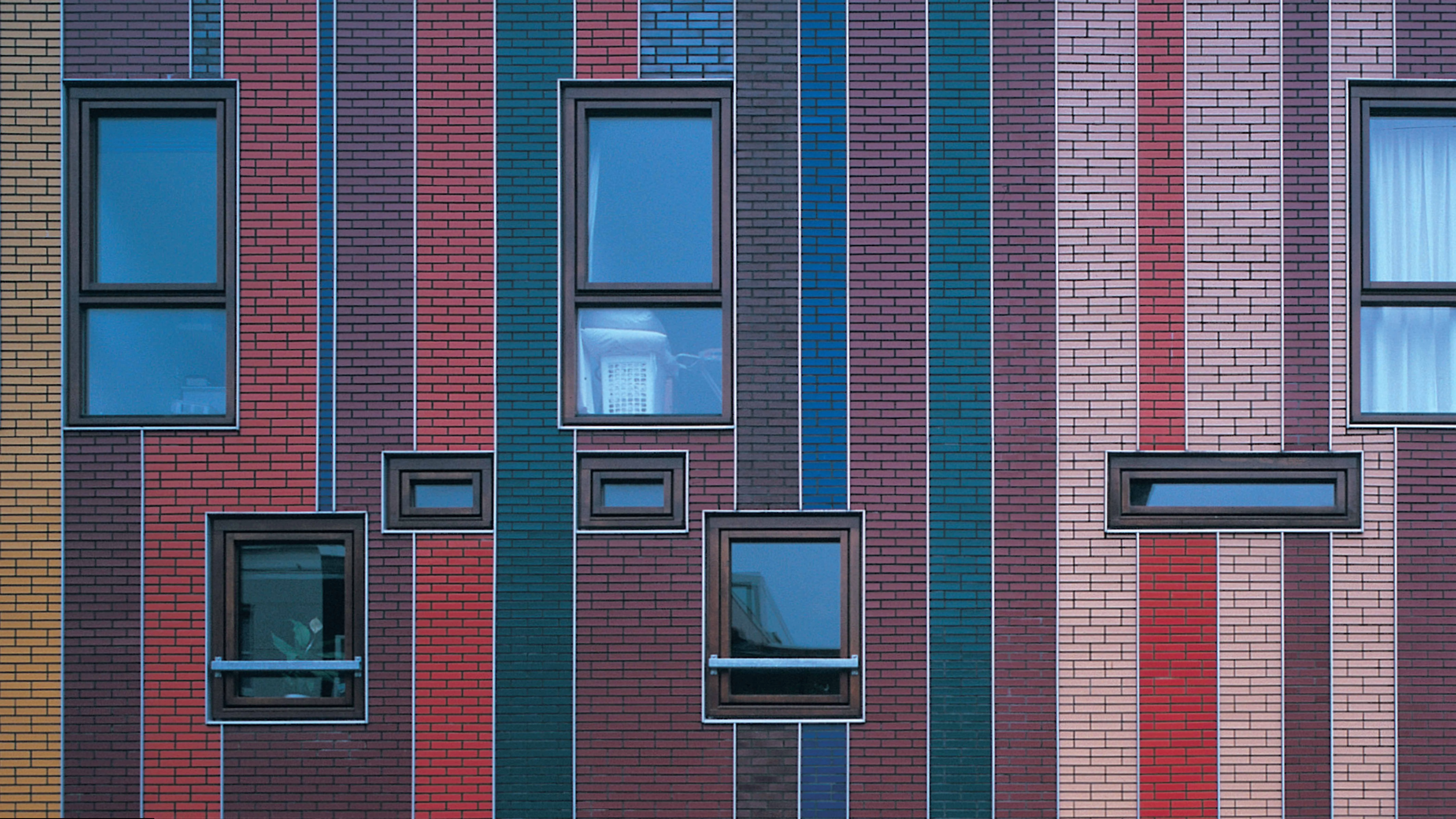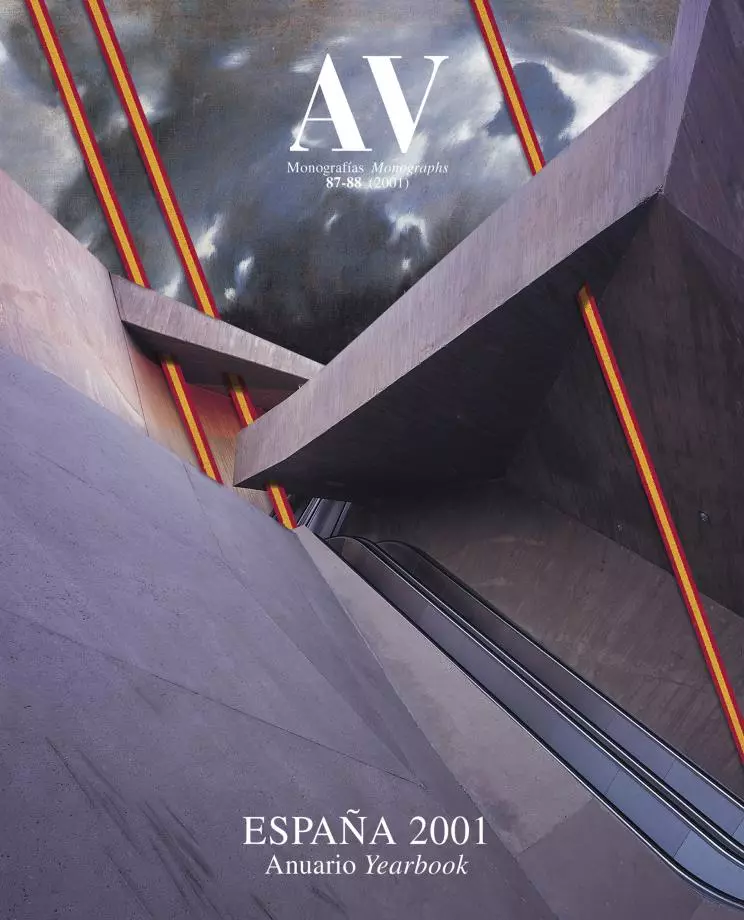Enric Miralles has extinguished himself like a violent bonfire suddenly dwindling to ashes. Consumed by the vigorous fire of a dazzling talent, the Catalan architect radiated the spirited confidence of the chosen, illuminating a placid landscape with the impatient ligntning bolts of his hand and his retina.
That gale of convulsive beauty crystallized in stormy and musical works, petals of concrete and branches of steel trapped in a still eddy of rough violent poetry, dancers of glass shards and splinters frozen in a pose, conflagrations of stone and wire feigning a pause to construct an ephemeral and tenacious choreography.
Scalded by so many cold flames, the precocious biography of Miralles is revealed at its premature end like a map traced on the skin by the burns of the genius, and in this privileged and sorrowful pyre now glow residues and memories.

Miralles was not able to see his ceramic, colorful dwellings in Amsterdam completed; and Oíza left in Madrid the Banco de Bilbao tower, whose technological elegance embodies the capital’s American dream.
The cortège accompanying his remains to the Barcelonese Cemetery of Igualada this afternoon of July will be honoring the architect in what surely is his most lyrical and severe work, and the processional route will pursue the path of timbers embedded in cement that flows like a solid torrent of matter and silence.
Following the random geometry of this immobile current, the mourners will know how to recognize themselves in the trunks pulled by that tongue of lava, stranded for a moment in the painful stage of death to be subsequently sequestered by the dry yet turbulent course of the river that carries us. But they will also be aware that in the stone water of its motionless flow, a lone flame survives.






